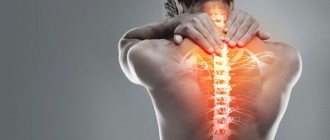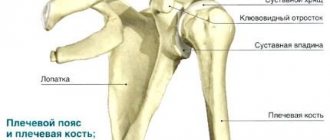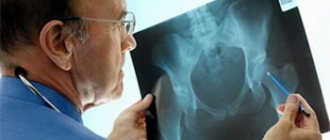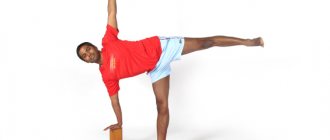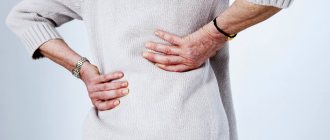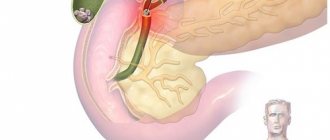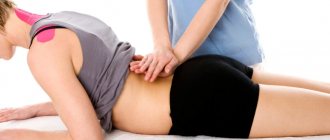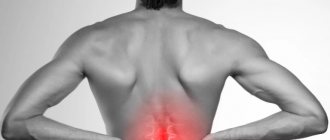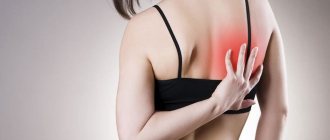Back pain - almost everyone is familiar with this unpleasant sensation. Back pain can vary in intensity and have different localization, which directly depends on the cause of the pain. Among the causes of back pain are: congenital and acquired pathologies of the spine, diseases of the musculo-ligamentous apparatus of the back (dorsopathies), inflammatory diseases of soft tissues, diseases of internal organs, in which pain can irradiate to the back area. Back pain is a symptom that occurs due to various diseases.
Types and causes of back pain:
- deforming, caused by pathological curvature of the spinal column and/or deformation of the intervertebral discs;
- dystrophic (spondylopathies), which appear as a result of inflammatory, traumatic, degenerative changes.
Back pain can also signal problems in neighboring organs. Pathologies of the lungs, stomach, intestines, heart, gallbladder, female genital organs, kidneys, and prostate often cause back pain. The sensations range from unpleasant, tugging to strong dull or sharp.
With intercostal neuralgia, the intensity and nature of the pain are different. It is described as piercing, aching, sharp, dull, unbearable, burning, making it difficult to breathe. Often, due to the intensity of the pain, intercostal neuralgia is mistaken for a heart attack.
If the “culprit” of the pain is the spine, then the symptoms may appear suddenly, for example, after an awkward movement, heavy lifting, or develop “increasingly.” The pain intensifies with a certain position of the body (sitting, lying down), and worries at night.
The stabbing pain, called lumbago or lumbago, is caused by a prolapsed disc or muscle spasm that pinches the sciatic nerve. The patient is literally unable to move or even breathe fully. Pain with scoliosis, osteochondrosis, injuries, and spinal tumors can be just as intense.
With osteoporosis, the pain is episodic, aching, patients feel heaviness in the back.
Acute pain is a sign of a vertebral fracture.
Arthritis is characterized by stiffness, numbness, and sudden onset of acute pain.
Symptoms
To correctly establish a diagnosis, it is necessary to evaluate the parameters of the pain syndrome:
- It is acute or the pain is dull, in the form of shooting or throbbing.
- The location can be on one or both sides, or the central chest area will be painful.
- Pain sensations can be intense, weak, or growing.
- It can hurt constantly or periodically.
- Pain can occur with movement, exertion, if a person sneezes or coughs.
No ads 2
Vertebrogenic pathologies
If the nerve roots of the neck and chest are pinched, tension will arise, respectively, in the cervical and chest areas. Osteochondrosis of these parts of the spine will manifest itself:
- Numbness.
- Low skin sensitivity.
- No pain when at rest.
- Low physical activity.
- Irradiation of pain to the upper limb, shoulder.
- Hyperemia or pallor of the skin.
If the heart and blood vessels are affected
With left-sided pain in the upper back, the pain affects the scapular area, arm, neck, collar area, and the jaws and teeth may hurt. In a person, the painful syndrome intensifies during movement, his blood pressure parameters constantly change, his face turns pale, perspiration appears, he is scared and anxious. Also, inhalation does not occur completely, and a rapid pulse is observed.
Such symptoms characterize angina pectoris if the paroxysmal state lasts a few minutes. Stress and physical work can provoke discomfort. If such symptoms are not eliminated by medications, then you should call the emergency room as soon as possible.
When the respiratory system is affected
If inflammation occurs in the lung tissues or other respiratory organs are affected, then pain in the upper spinal zone will occur. The person will cough, expectorate mucus, breathe unevenly, while coughing the pain will intensify, and he will begin to shiver.
If the gastrointestinal tract is affected
Pathological processes can affect the abdominal organs and spread to the upper spinal area. The person will feel discomfort in the epigastric zone, and his digestion will be disrupted. Also, there will be bitterness in the oral cavity, the patient will feel nauseous, and will be indifferent to food. For example, with gallstone pathology, pain will affect the cervical region, and if the pancreas is inflamed, the pain will be girdling.
The nature of the pain syndrome depends on the specific disease
Kidney dysfunction
The discomfort arising from renal dysfunction will not only affect the lumbar segment. The pain may be intense in the upper back on one or both sides. Such symptoms are characteristic of pyelonephritis. Also, the patient’s urine will darken, he will begin to shiver, swelling will appear, blood pressure will increase, and pain will appear when urinating.
No ads 3
Muscles are overstrained
The patient must understand what circumstances led to the pain. It happens when you turn your head sharply, carry heavy objects, distribute weight unevenly, or exercise for a long time. Aching, burning pain will cover the shoulder area with the neck, chest, scapular area, will move to the spine area, the person will feel weakened.
If there is panic
Panic occurs in various conditions and mental disorders. It causes pain caused by overstrain of the spinal muscles. Tachycardia with tremor, hyperhidrosis will also appear, the person will vomit, and sleep will be disturbed.
[node:field_similarlink]
Pain in the lower back and lower back
There are four main causes of low back pain:
- Mechanical, combining pathologies of the musculoskeletal system, including: muscle tension, muscle spasms, osteoarthritis, destruction of the nucleus pulposus (herniated disc), spinal stenosis, spinal curvature, compression fracture.
- Inflammatory - mainly arthritis, including reactive and psoriatic, as well as ankylosing spondylitis.
- Malignant – bone metastases from the lungs, thyroid gland, breast, prostate and so on.
- Infectious – osteomyelitis, abscess.
Osteoarthritis
The source of back pain is sometimes not the muscles, but problems with the bones and joints.
Cartilage, which softens and protects bones, can wear down as a person ages. The term for this is osteoarthritis. It is the most common form of arthritis among older adults, according to the US National Institute on Aging.
Osteoarthritis can eventually lead to the cartilage between bones being completely worn away, causing the bones to rub against each other. It can also put pressure on the nerves in the spine, causing numbness or tingling in the arms and legs.
Anyone who suspects they have osteoarthritis should see a doctor for diagnosis and treatment. Treatment is usually aimed at relieving pain and maintaining joint function.
Back pain: treatment
Since back pain is only a symptom, pain-relieving ointments, tablets, and injections relieve the condition temporarily. The main task to relieve and/or get rid of pain is to identify the cause of back pain. Only an experienced neurologist can determine the cause of the pain syndrome after a face-to-face consultation and examinations, including taking an anamnesis, examination, neurological tests, biochemical tests, ultrasound, CT, MRI and other studies necessary for an accurate diagnosis. Despite the fact that back pain is most often of musculoskeletal origin, there are many pathologies (appendicitis, kidney disease, aneurysm, bladder and kidney infections, pelvic organs, cardiovascular diseases and other disorders) that can manifest themselves , causing back pain. It is because of this that, before starting treatment, a complete examination is necessary, since treatment tactics for each disease are radically different from each other, and if the diagnosis is incorrect, treatment can lead to complications of the underlying disease causing back pain.
In cases where back pain is caused by diseases of the musculoskeletal and nervous systems, complex treatment is used, which may include:
- taking medications and/or intramuscular injections;
- infusion therapy;
- physiotherapy (magnet, ultrasound, ultraviolet light, and so on);
- physical therapy;
- massage;
- reflexology, acupuncture;
- manual therapy;
- hirudotherapy;
- blockades;
- homeopathy;
- herbal medicine;
The doctor selects treatment individually, taking into account the established cause and the presence of concomitant diseases.
Back pain should be a signal to see a doctor as soon as possible.
You can make an appointment at the President-Med clinic on Kolomenskaya by phone, +7 (499) 618-60-10
You can make an appointment at “President-Med” in Vidnoye by phone, +7 (495) 541-76-30, +7 (498) 547-29-
Who is at risk?
More often, pain in the upper spinal zone may occur in older people. Their bones and muscles become thinner. Therefore, physical activity with calcium intake, vitamin D and other multivitamin preparations is indicated for them. Discomfort often occurs in pregnant women. Their organs are displaced, and their high body weight puts stress on the spinal column.
If work involves prolonged sitting, the spinal column will always be overstrained. Gymnastics and walks in the fresh air are required. Pain syndrome should not be tolerated; self-medication will only aggravate the general condition and cause complications that are difficult to cure. Therefore, it is better not to take risks, but to seek help from professionals.
Spinal infections
Rarely, infection may be the cause of upper back pain. A spinal epidural abscess is a collection of germs and pus that forms between the spinal cord and the bones of the spine.
The abscess may grow and swell, resulting in pain. Early diagnosis is critical so that doctors can quickly remove the spinal abscess and avoid serious complications.
In some cases, surgery may be necessary to clean out the abscess area and reduce the risk of complications. But sometimes antibiotics are enough.
A study published in BioMed Research International notes that mortality can range from 2 to 25 percent in people with spinal epidural abscess, typically because diagnosis of the condition is delayed for many patients with the problem. This is not something to joke about.
Prevention
Ideally, you need to take preventive measures even before encountering a disease. That is, if you have a sedentary job, you need to set aside a couple of hours a week for the gym or jogging. But if you have already encountered an illness once, then this is a serious reason to prevent such a situation from happening again. To do this you need to do:
- Watch your posture.
- Do exercises and gymnastics in the morning, warm up every two hours of working at the computer.
- Do not lift weights if your body is not ready for it. Distribute your weight between the sides of your body.
- Watch your diet.
- Check how comfortable the sleeping place is. If necessary, change the pillow and purchase an orthopedic mattress.
- Avoid sudden head turns or shoulder movements.
- Sign up for a sports section. Better yet, go swimming. This type of exercise balances the load well and strengthens the muscles of the shoulder girdle.
Myofascial pain
Pain can also come from problems in the connective tissue of the back, which doctors call fascia.
Myofascial pain can begin after injury or overuse, but chronic myofascial pain can continue long after the initial injury.
It is still unknown why myofascial pain persists in some cases. Doctors may recommend physical therapy and myofascial therapy to give a person a chance to work on the fascia and relieve pain.
